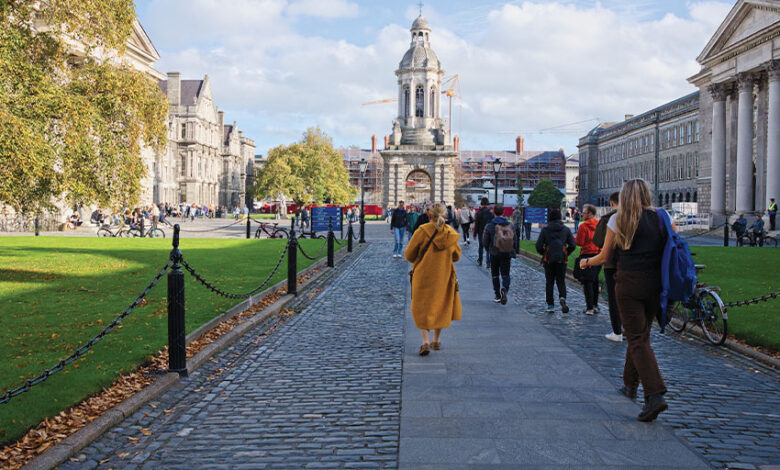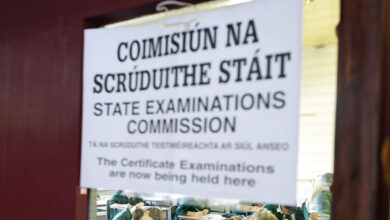Institutional barriers inhibiting student mobility

Student Mobility in Ireland and Northern Ireland, a Shared Island Unit/Economic and Social Research Institute (ESRI) study examining undergraduate mobility within Ireland and between Britain, has highlighted a relatively insignificant level of student mobility, not least as a consequence of institutional barriers.
Contextualising the ESRI’s research into student mobility, the report highlights the “increasing focus in policy development internationally and in Ireland on the globalisation of higher education and student mobility”. Consequently, this enhanced volume of research has focused on the drivers of and obstacles to studying abroad. However, hitherto, there has been a dearth of systematic research into the factors which influence mobility within Ireland and Britain.
The report produced six main findings.
In the 2020/2021 academic year, a mere 1,255 students in the Republic were from Northern Ireland, while only 1,170 students in Northern Ireland were from the Republic. This equates to 0.6 per cent and 2.4 per cent of the total student population in each jurisdiction respectively. Students from Northern Ireland that did opt to study in the Republic are more likely to apply for third-level courses in locations in border counties and in Dublin.
While it is possible for students in Northern Ireland to apply through the Central Applications Office (CAO) process in the Republic, applicants must undertake four A Levels in order to achieve the maximum available CAO points. This process is hindered by the fact that most students in Northern Ireland undertake a total of three A Levels. Similarly, while many third-levels courses in the Republic have restricted access on the basis of a foreign language requirement, fewer A Level students in Northern Ireland take a language compared with Leaving Certificate students in the Republic.
Meanwhile, more than three times as many students from Northern Ireland (13,685 in 2020/2021) study in Britain when compared the average total number of students from the Republic who study in Britain (around 4,000). Students from Northern Ireland are willing to relocate across Britain. However, there is relatively little mobility in the opposite direction as a consequence of the high degree of competition for third-level places.
Often, mobility is determined by availability of places, and this is particularly reflected in the significant number of applications to study competitive medical courses elsewhere.
Overall, a minority of students from Northern Ireland or from Britain complete the CAO process, are offered a place in a higher education institution (HEI) in the Republic and accept it. Where students from Northern Ireland do meet the minimum entry requirements, they are less likely to accept an offer. One explanation is that they are using an application elsewhere as a safety net for an application to a high demand course. Additionally, they often receive an offer to study at a HEI in the Republic after they have received an offer for a HEI in Northern Ireland or in Britain.
“Current higher education entry requirements in Ireland appear to disadvantage students from Northern Ireland…”
Emer Smyth, Research Professor, ESRI
At the same time, the rate of successful applications to HEIs in Britain are lower for applicants in the Republic.
In relation to these institutional barriers, report coauthor, Emer Smyth, observes: “Current higher education entry requirements in Ireland appear to disadvantage students from Northern Ireland. An adjustment of the points equivalences would likely make studying in Ireland a more realistic option for those from Northern Ireland. Although only one barrier to mobility, a change would have an important symbolic value in being seen as welcoming to students from Northern Ireland.”
Overall, the decision to study elsewhere is a consequence of several interacting dynamics, including tuition/registration fees, financial support, and cost of living. While many students from the Republic will find lower accommodation costs elsewhere, a large proportion avoid such costs by remaining in their family home.
Policy implications
Emphasising the value of student mobility, both for the students personally and for HEIs, the ESRI’s report has three main findings.
- Career guidance within schools could promote enhanced awareness of third-level options elsewhere and this process could be supported by HEIs.
- A rationale exists to redesign the CAO points equivalence to A Levels given the context in which very few students in Northern Ireland undertake four A Levels, and to reexamine modern foreign language requirements given that relatively few second-level students in Northern Ireland study a foreign language.
- Given the significance of cost-of-living factors, prevailing accommodation costs and inadequate housing supply are inevitably acting as barriers to students from Northern Ireland and Britain studying in the Republic.
As well as benefiting students and HEIs, report coauthor Merike Darmody suggests: “Student mobility has the potential… to foster greater cohesion between Ireland and Northern Ireland. The study findings highlight the scope for greater cooperation across the island of Ireland in meeting student needs.”
Launched by Fine Gael Minister for Further and Higher Education, Research, Innovation and Science, Simon Harris TD, Student Mobility in Ireland and Northern Ireland was coauthored by the ESRI’s Emer Smyth and Merike Darmody.
Conducted in conjunction with the Department of the Taoiseach’s wider Shared Island programme, the ESRI report is one of the relatively few pieces of systematic research focusing on the institutional factors influencing student mobility within Ireland – north and south – and Britain.
The report addresses three research questions:
- What is the level of student mobility within the island of Ireland and Britain? How has this changed over time, particularly during the pandemic?
- What factors are associated with student mobility?
- To what extent is there potential to increase student mobility across the island? Is this a desirable objective from a stakeholder perspective?
Context
A cap on undergraduate places in Northern Ireland’s universities poses a challenge by imposing a limit on options, increasing entrance requirements for high demand courses. As a result, more than one-third of undergraduates leave for universities in Britain.
Furthermore, insufficient understanding and perceived complexity of the higher education admissions systems – CAO and UCAS – has a negative impact on student mobility. Similarly, insufficient understanding of the transferability of UK qualifications also acts as a barrier to undergraduate mobility.
At the launch, Minister Harris asserted: “Today’s report shows us once more the vital role education plays in strengthening relations north and south. I am pleased to launch this ESRI Shared Island report which provides some really valuable insights on student mobility across this island and also between Ireland and Britain.
“I am committed to working with Higher and Further Education Institutions and with partners in the UK Government and Northern Ireland to make it as easy as possible for students to choose to study in either jurisdiction. This is really important in deepening our connections both north/south and east/west and in ensuring that young people have access to the best possible educational opportunities.”
In her response to the report, Terri Scott – a former Pro Vice Chancellor at Ulster University and former President of IT Sligo – concluded: “A joined-up approach to maximising the return on investment in tertiary education, on an all-island basis, will present greater choice, opportunities and employment prospects for the graduates of the future.”





